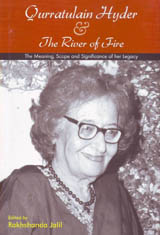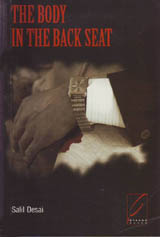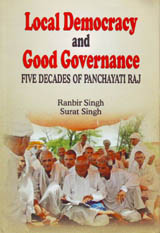|
Short Takes
Breaking the mould
Qurratulain Hyder
& The River of Fire
Edited by Rakhshanda Jalil.
Aakar Books.
Pages 248. Rs 595.
Reviewed by Randeep Wadehra
 SHE
was barely 11 when she wrote her first story. Her debut short story
collection, Sitaron se Aage, was published in 1945. She migrated
to Pakistan, where she published Aag ka Darya in the late 1950s
– a novel that "rocked the literary circles in Pakistan".
However, she returned to India a disillusioned person and worked for the
Imprint and the Illustrated Weekly of India. She published
over 15 books belonging to different genres. But mere cataloguing of the
numbers does not do justice to Qurratulain Hyder – the first lady of
Urdu literature. She was a maverick, who broke all stereotypes
vis-`E0-vis women writers and characters. She was not prepared to
confine herself to feminine issues alone. This book is not a mere
collection of platitudes and homilies but its different contributors
underscore diverse aspects of Qurratulain’s personality and works –
especially the trailblazing Aag ka Darya, which "engages
with the question of composite culture in India in the backdrop of the
Partition of the subcontinent". Interestingly, this novel has been
republished several times in Pakistan although its narrative goes
contrary to that country’s version of the subcontinent’s history.
This is a must read for all lovers of good literature. SHE
was barely 11 when she wrote her first story. Her debut short story
collection, Sitaron se Aage, was published in 1945. She migrated
to Pakistan, where she published Aag ka Darya in the late 1950s
– a novel that "rocked the literary circles in Pakistan".
However, she returned to India a disillusioned person and worked for the
Imprint and the Illustrated Weekly of India. She published
over 15 books belonging to different genres. But mere cataloguing of the
numbers does not do justice to Qurratulain Hyder – the first lady of
Urdu literature. She was a maverick, who broke all stereotypes
vis-`E0-vis women writers and characters. She was not prepared to
confine herself to feminine issues alone. This book is not a mere
collection of platitudes and homilies but its different contributors
underscore diverse aspects of Qurratulain’s personality and works –
especially the trailblazing Aag ka Darya, which "engages
with the question of composite culture in India in the backdrop of the
Partition of the subcontinent". Interestingly, this novel has been
republished several times in Pakistan although its narrative goes
contrary to that country’s version of the subcontinent’s history.
This is a must read for all lovers of good literature.
The Body in the Back
Seat
By Salil Desai.
Gyaana Books.
Pages 254. Rs 250.
 Ashish
Karve goes missing. A couple of days later his body is found in his own
car’s back seat with his wrists slashed. Inspector Saralkar is sure
that someone has tried to camouflage murder as suicide. Thus starts a
riveting whodunit. There are several suspects – each having a powerful
motive to kill Karve. Desai has skillfully strewn red herrings while
leaving genuine clues staring the police and the readers in the face;
the clues appear so innocuous that one realises their worth only in the
final pages. Clearly, the author has done his homework. He is able to
maintain mystery and thus sustain readers’ interest till the end.
Having said this, it would be pertinent to mention that more could have
been done to enhance the reading experience. The overall atmospherics
could have been better, the police humour sharper and their language
more realistic – they are unbelievably polite. More importantly, the
language could have been more in line with the narrative’s tenor –
at times it gives the impression of being a bit literary. Expression to
passions is a bit too staid. Not a single invective! Saralkar’s
counterfoil is his sidekick Motkar but, gradually, the contrast between
the two disappears when the latter starts behaving like his boss.
Neither is anywhere near Keating’s Ghote in terms of characterisation.
But, these are nitpickings really. This is the best murder mystery by an
Indian author so far. Ashish
Karve goes missing. A couple of days later his body is found in his own
car’s back seat with his wrists slashed. Inspector Saralkar is sure
that someone has tried to camouflage murder as suicide. Thus starts a
riveting whodunit. There are several suspects – each having a powerful
motive to kill Karve. Desai has skillfully strewn red herrings while
leaving genuine clues staring the police and the readers in the face;
the clues appear so innocuous that one realises their worth only in the
final pages. Clearly, the author has done his homework. He is able to
maintain mystery and thus sustain readers’ interest till the end.
Having said this, it would be pertinent to mention that more could have
been done to enhance the reading experience. The overall atmospherics
could have been better, the police humour sharper and their language
more realistic – they are unbelievably polite. More importantly, the
language could have been more in line with the narrative’s tenor –
at times it gives the impression of being a bit literary. Expression to
passions is a bit too staid. Not a single invective! Saralkar’s
counterfoil is his sidekick Motkar but, gradually, the contrast between
the two disappears when the latter starts behaving like his boss.
Neither is anywhere near Keating’s Ghote in terms of characterisation.
But, these are nitpickings really. This is the best murder mystery by an
Indian author so far.
Local Democracy and
Good Governance
Edited by Ranbir Singh & Surat Singh.
Deep & Deep.
Pages xx+288. Rs 1,280.
 Although
panchayats have been part of India’s rural scene since times
immemorial, their worth as effective tools of grassroots governance has
yet to be recognised fully. The Balwant Rai Mehta Committee had
envisaged the "planning from below" concept as early as in
1957 but it took the government quite a bit of time to fashion necessary
micro-level systems for making panchayats viable vehicles for
development. Before this happened, several other committees and working
groups were formed that looked into several aspects of micro-level
planning at the block level and the reasons for the failures of the
Panchayati Raj. However, the Panchayati Raj Institutions have yet to be
made a seamless component of the overall architecture of governance. The
constitutional amendments of 1992 and 1993 have helped in revamping the
PRIs and have also, arguably, empowered women. This book dwells
extensively upon the evolution of panchayats over a period of five
decades since 1959. It also enumerates various strengths and weaknesses
of the PRIs. Although
panchayats have been part of India’s rural scene since times
immemorial, their worth as effective tools of grassroots governance has
yet to be recognised fully. The Balwant Rai Mehta Committee had
envisaged the "planning from below" concept as early as in
1957 but it took the government quite a bit of time to fashion necessary
micro-level systems for making panchayats viable vehicles for
development. Before this happened, several other committees and working
groups were formed that looked into several aspects of micro-level
planning at the block level and the reasons for the failures of the
Panchayati Raj. However, the Panchayati Raj Institutions have yet to be
made a seamless component of the overall architecture of governance. The
constitutional amendments of 1992 and 1993 have helped in revamping the
PRIs and have also, arguably, empowered women. This book dwells
extensively upon the evolution of panchayats over a period of five
decades since 1959. It also enumerates various strengths and weaknesses
of the PRIs.
|